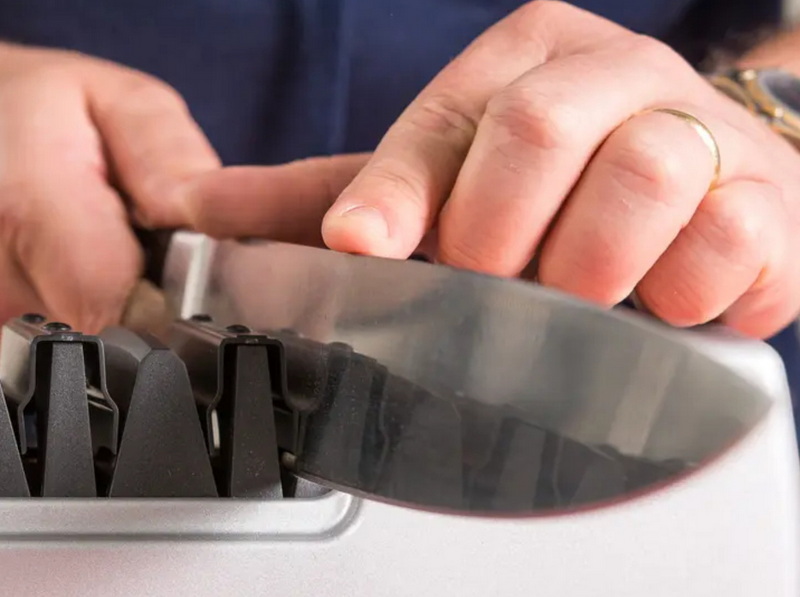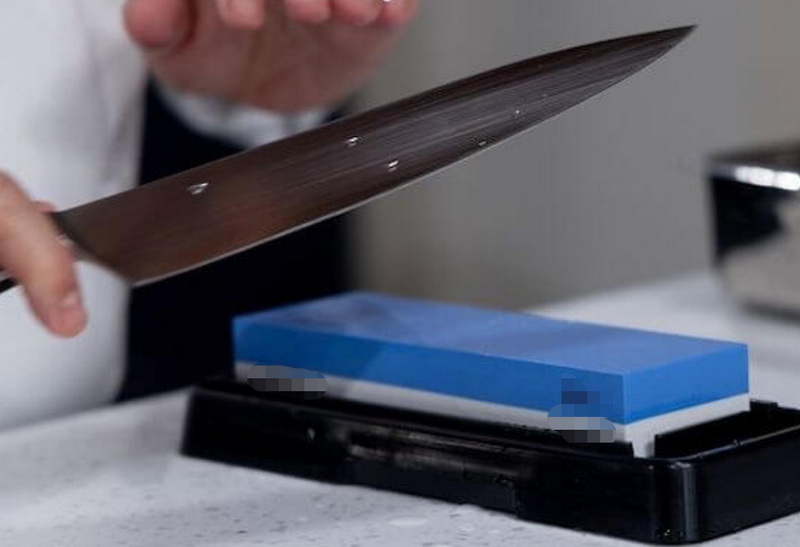- All
- Product Name
- Product Keyword
- Product Model
- Product Summary
- Product Description
- Multi Field Search
Views: 222 Author: Ann Publish Time: 2025-10-23 Origin: Site











Content Menu
● Overview of Paring Knife Care
● Sharpening Techniques for Paring Knife
>> Common sharpening approaches
>> Hollow grind vs flat ground
>> Operational steps for sharpening
>> Special tips for OEM customers
● Cleaning and Sanitizing Practices
● Proper Storage Solutions for Paring Knife
>> OEM considerations for storage
● Common Maintenance Mistakes to Avoid
>> Key pitfalls
● Choosing the Right Paring Knife for Your Kitchen
>> OEM customization considerations
● FAQs
>> How should I sharpen a paring knife for best results?
>> What is the best storage solution for a paring knife in a busy kitchen?
>> Can I put a paring knife in the dishwasher?
>> How often should I sharpen my paring knife?
>> How do I choose the right angle for my paring knife?
Paring knives are among the most versatile tools in any kitchen. Their small size and nimble blade enable precise peeling, trimming, and intricate prep work that larger knives cannot perform as efficiently. For professional kitchens and discerning home cooks, the paring knife must stay razor-sharp, clean, and properly stored to ensure safety and performance. This article provides practical guidance on maintaining Paring Knife performance, with emphasis on three core areas: sharpening, cleaning, and storage. It also covers material considerations, ergonomic design, and OEM customization considerations for brands seeking reliable paring knife solutions.
A well-maintained Paring Knife preserves blade integrity, reduces the risk of slips, and extends tool life. The following sections break down actionable steps you can implement in a professional setting or at home.

Sharpening is the heart of blade maintenance. The paring knife benefits from thoughtful angle control, stone selection, and a disciplined routine. Correct sharpening not only restores edge sharpness but also reinforces consistent cutting performance across delicate tasks like peeling citrus and trimming root vegetables.
- Manual whetstones: A two-stone progression (e.g., 400/1000 grit for repair and initial refinement, followed by 3000/6000 grit for refinement) yields a keen edge with refined polish. For advanced users, a final 8000 grit may provide a mirror finish on suitable steels.
- Water stones vs oil stones: Water stones are widely favored for ease of use and faster material removal; oil stones are durable and economical but require longer soaking and careful maintenance.
- Honing vs sharpening: Honing straightens micro-imperfections between sharpening sessions; it should not replace periodic sharpening for a truly sharp paring knife.
- Sharpening angle considerations: Most paring knives perform best at angles between 15° and 20°. The exact angle depends on blade steel, heat treatment, and manufacturer recommendations. Softer steels may tolerate slightly wider angles, while high-hardness steels benefit from tighter angles to maintain a fine edge.
- Hollow-ground blades: These blades have a concave hollow grind along the edge, which reduces drag and lightens the sharpening workload. They are common on some Japanese-style paring knives and can produce extremely fine slices when maintained properly.
- Flat-ground blades: Flat-ground paring knives present a uniform bevel along the edge, offering robust edge retention and predictable performance for general tasks. They are versatile and widely used in Western-style kitchen knives.
1. Inspect the blade for nicks or chips. If larger chips exist, begin with a coarser grit to remove material evenly.
2. Secure the knife on a stable surface or guide to maintain consistent angle.
3. Establish the target angle (e.g., 15°–18° per side, depending on blade and user preference).
4. Apply even pressure and use long, controlled strokes across the stone, moving from heel to tip.
5. Alternate sides to avoid uneven edge formation.
6. Progress through progressively finer grits to refine the edge.
7. Test edge sharpness with a light touch on a piece of paper or a soft food item; blades should cut smoothly without snagging.
8. Clean and dry the blade thoroughly after sharpening to prevent corrosion and residue buildup.
- Consider offering a guided sharpening set as part of the packaging, including a compatible whetstone or honing rod.
- Provide recommended grit progression tailored to the blade steel used in the paring knife.
- Include explicit edge geometry specifications in product manuals to assist users and retailers in maintaining consistent performance.
Cleaning is essential to prevent corrosion, maintain hygiene, and preserve handle integrity. Paring knives often contact varied ingredients, including citrus, garlic, and fish, which can leave residues that stain or dull the blade if not properly managed.
- Hand wash recommended: Many professional settings prefer hand washing with warm water and a mild, neutral pH detergent. Dishwashers can subject blades to harsh temperatures, detergents, and agitation that may degrade the edge or handle over time.
- Detergent choice: Use a mild, non-abrasive detergent. Avoid highly acidic or alkaline cleaners that can corrode certain blade steels or degrade finishes.
- Drying: Immediately dry the blade after washing to prevent water spots and rust on carbon steels or nickel-rich steels. For stainless steels, thorough drying minimizes water staining and mineral deposits.
- Sanitizing: For food safety, consider a quick wipe with a food-safe sanitizer if required by your QA protocol. Ensure sanitizer compatibility with blade materials and coatings.
- Avoid soaking: Do not soak paring knives for extended periods, especially in acidic solutions or saltwater, as this can promote corrosion and weaken joints in some handles.
- Materials such as polymer, resin, wood, and composite handles each respond differently to cleaning agents. Plastic and synthetic handles typically withstand mild cleaners, while wood handles require careful moisture control and occasional conditioning oils to prevent cracking or warping.
- OEM note: Provide care instructions that align with handle materials used in your paring knife line, including any warranty implications for certain cleaning methods.

Storage choices affect edge protection, safety, and organization within your kitchen. Proper storage minimizes incidental contact that can dull or chip the blade and reduces the risk of personal injury.
- Knife blocks and magnetic bars: Secure placement reduces the risk of contact with other utensils and protects the edge. For OEM programs, ensure blocks are designed with drainage and air circulation to reduce moisture buildup.
- Protective sheaths and blade guards: An economical solution for drawer storage and transport; ensure guards do not trap moisture against the blade edge.
- Drawer dividers with blade guards: An alternative for compact kitchens or shared spaces. Use dividers that prevent blade-edge contact with other utensils.
- Cleaning and drying before storage: Always ensure the blade is thoroughly dry before placement to reduce rust risk.
- Environment: Keep knives in a dry, well-ventilated area away from heat sources. Humidity accelerates corrosion and can affect wood handles.
- Humidity control: In damp climates, consider silica gel packs or dehumidifying storage solutions within knife blocks or drawers.
- Custom slots and labeling: Allow customers to identify each knife type quickly during use and cleaning.
- Aesthetics vs functionality: Design knife blocks that align with brand identity while maintaining practical edge protection.
- Integrated sharpeners: Some premium blocks incorporate built-in sharpeners or honing devices to encourage regular maintenance.
Avoiding common mistakes helps maintain a paring knife's sharpness and longevity.
- Over-polishing or aggressive grinding can remove material too quickly and reduce blade height or alter bevel geometry.
- Incomplete drying leads to rust in carbon steels and staining in some stainless steels.
- Improper sharpening angles cause uneven wear or micro-chipping at the edge.
- Using inappropriate sharpening tools for the blade's steel type can damage the edge or coating.
- Storing wet blades can encourage corrosion and degrade wooden handles.
- Regular inspection for micro-chips and edge roll. Minor edge damage can often be repaired with light sharpening; larger damage may require professional service.
- Use recommended tools. Align sharpening actions with the blade's steel hardness and coating, if any.
- Maintain storage discipline. A dedicated, dry storage space supports blade longevity.
Selecting the right Paring Knife involves balancing material science, ergonomics, and intended use. For OEM buyers, it is essential to consider how the knife will perform in production environments and consumer households.
- Stainless steel: Corrosion resistance, ease of maintenance, and generally good edge retention for everyday tasks.
- High-carbon stainless steel: Combines edge retention with corrosion resistance; may require more careful maintenance to prevent staining.
- Damascus or layered steels: Aesthetic appeal and distinctive edge behavior; performance varies with heat treatment and finishing.
- Composite blades: Some OEM lines use ceramic or coated blades for particular market segments; discuss care differences with customers.
- Material options: Wood, polymer, resin, micarta, and composites each offer tactile feel, grip security, and moisture resistance considerations.
- Shape and balance: Shorter blades paired with contoured handles generally provide precise control, ideal for intricate paring work.
- Weight considerations: Lighter blades reduce fatigue during repetitive prep tasks, while slightly heavier blades can aid control for some users.
- Branding: Logo placement, laser etching, and finish options to match retailer identity.
- Coatings: Anti-corrosion or non-stick coatings; compatibility with food safety standards.
- Packaging: Customized packaging integration, from inner packaging to retail-ready boxes.
- MOQ and lead times: Clear alignment on minimum order quantities and production schedules.
Maintaining a paring knife involves a balanced routine of sharpening, cleaning, and proper storage. Regular attention to edge geometry, meticulous cleaning practices, and thoughtful storage options collectively extend blade life, improve safety, and sustain cutting performance. For OEM partners, delivering clear care instructions, compatible sharpeners, and customizable packaging enhances user satisfaction and brand reliability. By adopting the strategies outlined above, both professional chefs and home cooks can enjoy consistently precise paring knife performance for years to come.

Start with a coarse grit to repair any chips, then move through progressively finer grits while maintaining a steady angle around 15°–20°. Test the edge by slicing a sheet of paper. Repeat as needed until a clean slice is achieved.
A dry, dedicated storage space such as a knife block or magnetic strip that keeps blades separated and protected is ideal. Ensure blades are completely dry before storage.
Hand washing is recommended for most professional paring knives to prevent heat and chemical exposure from dishwasher cycles, which can degrade edges and handles over time.
This depends on usage and steel; a professional kitchen may sharpen daily or after several uses, while home cooks might sharpen weekly or monthly based on performance. Regular honing can keep edges aligned between sharpening sessions.
Start with 15°–18° per side for most stainless and high-carbon stainless steels. Softer steels may tolerate slightly wider angles, whereas harder steels require careful maintenance to avoid chipping.
The Ultimate Professional Knives for Halal Butchery in Middle Eastern Kitchens
Chef Knife Size Guide: Choosing Between 6″, 8″, 10″, And 12″
Custom Knife Handles: How To Design A Chef Knife That Fits Your Hand Perfectly
Chef Knife Surface Treatments Guide: From Polished Migaki To Damascus Patterns
Inside Our Professional Knife Sample Room: Quality You Can See
Universal Knife Block Buying Guide: Modern Acrylic & ABS Knife Holders for Professional Kitchens
Universal Knife Block: The Complete Guide To Modern, Hygienic Knife Storage
The Complete Guide To Red Handle Knife Sets: Style Meets Functionality in The Kitchen
Professional Knives for Halal Butchery And Middle Eastern Cuisine